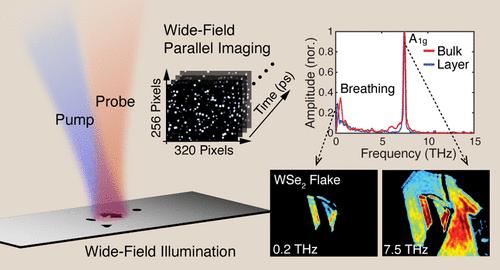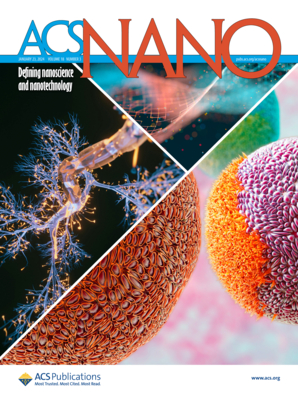Rapid Wide-Field Correlative Mapping of Electronic and Vibrational Ultrafast Dynamics in Solids
IF 15.8
1区 材料科学
Q1 CHEMISTRY, MULTIDISCIPLINARY
引用次数: 0
Abstract
Coupling between electronic and vibrational degrees of freedom in solids is responsible for many fundamental material properties, including superconductivity, ferroelectricity, high thermal conductivity, and indirect bandgap emission among many others. In heterogeneous materials electronic-vibrational coupling gives rise to spatial correlations between the electronic relaxation properties and vibrational dynamics. Visualizing and mapping these correlations may lead to important physical insights for applications that include electronics, optoelectronics, and energy technologies. However, due to the vastly different energy scales involved, measuring and correlating electronic and vibrational properties is challenging. While in principle, ultrafast pulses with sufficient bandwidth generate excited-state population and vibrational coherence signatures, the need to measure the signal point-by-point across the sample results in relatively slow acquisition, leading to an increased risk of sample photodamage and rendering the measurements highly susceptible to noise. Here, we introduce Parallel Rapid Imaging with Spectroscopic Mapping (PRISM), an ultrafast, wide-field, and coherent imaging technique, that allowed for the simultaneous acquisition of electronic state decay in the 0–10 ps range and vibrational spectra in the structurally sensitive low-frequency 5–600 cm–1 range. The exceptionally high speed of PRISM, exceeding 1.6 million time-resolved traces per second, enabled the mapping of electronic and vibrational properties across 80,000 pixels simultaneously in few-layer tungsten diselenide and perovskite materials. Correlations between the population and coherence maps reveal spatial heterogeneity not observed by either measurement alone. The ability to map electronic-vibrational coupling makes PRISM particularly well-suited for fundamental studies of complex solids and a wide range of materials applications.

求助全文
约1分钟内获得全文
求助全文
来源期刊

ACS Nano
工程技术-材料科学:综合
CiteScore
26.00
自引率
4.10%
发文量
1627
审稿时长
1.7 months
期刊介绍:
ACS Nano, published monthly, serves as an international forum for comprehensive articles on nanoscience and nanotechnology research at the intersections of chemistry, biology, materials science, physics, and engineering. The journal fosters communication among scientists in these communities, facilitating collaboration, new research opportunities, and advancements through discoveries. ACS Nano covers synthesis, assembly, characterization, theory, and simulation of nanostructures, nanobiotechnology, nanofabrication, methods and tools for nanoscience and nanotechnology, and self- and directed-assembly. Alongside original research articles, it offers thorough reviews, perspectives on cutting-edge research, and discussions envisioning the future of nanoscience and nanotechnology.
 求助内容:
求助内容: 应助结果提醒方式:
应助结果提醒方式:


